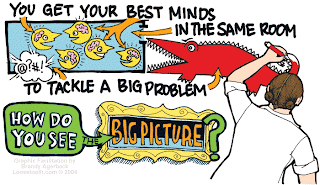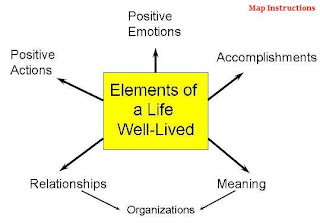Positive Youth Development
Overview
A new dynamic approach to learning in schools is emerging from chrysalis. And like a butterfly it has two wings carrying it aloft. I refer to the recognition that academic knowledge must be balanced with life knowledge, hard skills with soft skills, head with heart, and individual sensibility with that of the group.

Positive Youth Development is a helpful rubric for describing a wide range of initiatives designed to foster emotional and social intelligence along with more traditional education goals. These have emerged in response to a crucial gap perceived by practitioners in schools and youth agencies. Simply put, learning is a social process within which human emotions and relationships are powerful intrinsic influencers.
This is a relatively new field and highly interdisciplinary. Moreover, each of these initiatives has a distinct theoretical framework, methodology, and ecosystem of institutions and practitioners. The Social Development Research Group at the University of Washington has identified 161 PYD programs. Some 3 million young people have been involved in related research projects across North America [Search Institute].

PYD is part of an even broader shift in psychological theory, research, and praxis. Related developments include Positive Psychology, Positive Scholarship, and Appreciative Inquiry. These all share a common perspective. That is, that the positive images we create and share - of ourselves, of each other, and our futures - help drive their actualization.
"As you ramble through Life,
Whatever be your goal.
Keep your eye upon the doughnut,
And not upon the hole."
Whatever be your goal.
Keep your eye upon the doughnut,
And not upon the hole."
What Parents Are Saying
Teaching social skills has tremendous importance for the nearly 1,000 people surveyed by Hasbro. 90% of parents consider social skills to be vital to their children's happiness and confidence and nearly 80% consider these more important than academic skills when it comes to happiness.

Social and Emotional Learning
SEL is an umbrella term used to describe the skills needed “to recognize and manage emotions, develop care and concern for others, make responsible decisions, establish positive relationships, and handle challenging situations effectively" (CASEL) SEL has grown increasingly important within primary and secondary schools across Canada and the United States.
Developmental Asset Framework
This framework developed by the Search Institute outlines those ‘assets’, or ‘development building blocks’ essential to the health and well being of Middle and High School students. Young people draw on these assets to make positive choices, avoid high-risk behaviors, and thrive. Internal Assets include competencies and values that young people learn and internalize on their way to becoming responsible and healthy adults. External Assets consist of resources like friends, family, mentors, school, and community organizations.
Resilience Education
Resilience Education is concerned with how some youth, despite terribly challenging lives, are able to overcome adversity and thrive. Research has identified these core characteristics and strengths, which are key to healthy development and effective learning. “Changing the life trajectories of children and youth from risk to resilience starts with changing the beliefs of the adults in the families, schools, and communities”. [Benard, Bonnie 2004, Resiliency: What We Have Learned. San Francisco, CA: WestEd]
Character Education
Character Education is an umbrella-term used to describe the teaching of children in a manner that will help them to develop. Concepts that fall under this term include social and emotional learning, moral reasoning/cognitive development, life skills education, health education; violence prevention, critical thinking, ethical reasoning, and conflict resolution and mediation. This form of education involves teaching children and adolescents’ values including honesty, stewardship, kindness, generosity, courage, freedom, justice, equality, and respect.
Positive Behaviour Support
PBS is the application of evidence-based strategies and systems that work at an individual level and school wide level. This is designed to help establish a positive and safe environment, which in turn is conducive to increased academic performance.
“One of the wonderful features of a “PBS School” is that the ... selection of interventions and programs is often done collaboratively by a school team ... Positive Behavior Support is different from traditional behavior modification in three ways. First, it is focused on the use of positive intervention strategies that are respectful of the individual. Second, the interventions that are developed are individualized and are based on an understanding of the individual, the individual’s communication abilities, and the unique situations of the individual. Third, the intervention strategies that are developed are focused on helping the individual gain access to new environments, have positive social interactions, develop friendships, and learn new communication skills.”
School Climate
School Climate is another term with a fairly broad definition. In essence, school climate refers to the overall quality and feel of the attitudes, feelings, and behaviours of individuals - students, teachers, administrators, staff. School climate establishes the bounds of acceptable behaviour among all stakeholders, and all are deemed responsible for its maintenance. There are four overlapping relation fields.
- The relationship of a student to her or himself
- A student to her or his peers
- A student to her or his parents and community
- A student to her or his school workers, including teachers, administrators, and all staff

















